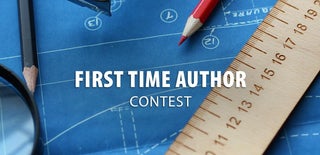Introduction: Paper Airplane Challenge: Making Planes That Will Not Fly
In most paper airplane challenges the goal is to make a plane that flies really well. Not here! You can learn a lot about paper airplanes by trying to make a plane that will NOT fly.
This challenge begins with a basic, working paper airplane, and challenges students to modify their plane so that it will not fly. It may be harder than you think! Along the way, the activity can lead to interesting discussions about what allows paper airplanes to fly, the fluid dynamics of air, and even what we mean by "flying".
This project works well for remote learning, since the materials are readily available, and the students do not need to have exactly the same materials. This Instructable is part of the Paper Flight Workshop.
Supplies
- Scissors
- Tape
- Paper (8 1/2 x 11 printer paper is good for the first plane, if available. As the project progresses students may want to try other types of paper, for example, newspaper, recycled magazine pages, paper towels, construction paper, etc. )
Step 1: Make Your "Go-To" Plane
If students know how to make paper airplanes have them fold their "go-to" paper airplane model. The specific model is not important, just have everyone make a good working airplane. If a student is not comfortable making a plane from memory, you can help them and/or use A Very Simple Paper Airplane or any simple paper airplane instructions on Instructables.
Students should test out their plane — flying it three or four times and noting approximately how far it flies and making any adjustments they want to.
Step 2: It Will Never Fly!
As students are building their planes you should fold a basic plane and then use a paper punch to punch holes distributed over the wings. (If you do not have a paper punch, use scissors to cut a few holes in the wings.)
Gather students and ask them what they think will happen when you try to fly your plane.
Try out your plane. Surprise number one: it flies!
Challenge students to make one modification to their plane that will make it NOT fly. There are likely to be more surprises as students test out their modified planes.
Have students come back to explain what they did to their planes, and why. Did their planes work -- or not work -- the way they expected? What differences did they observe after the modifications?
Step 3: Keep Experimenting! Keep Discussing!
After the first round, students should go back and try new modifications. Periodically gather students and discuss what was surprising, the modifications they tried (and why), and their theories and new ideas.
Here are some things previous students have tried:
- Various sorts of holes in the wings.
- Adding weight.
- Adding weight to specific parts of the plane.
- Slits in the wings.
- Cutting off a wing.
- Adding bumps, flaps, or other projections.
- Unfolding part (or all) of the plane.
- Crumpling up the whole plane into a paper ball.
All of these can lead to interesting discussions and raise interesting questions. (You may find yourself calling an aeronautical engineer or your local museum-of-flight pretty quickly!)
Some example discussions that have come up include:
- Do paper airplanes "need" all of the wing area they have?
- Can air flow over holes in the wing or would it go through the hole?
- What do we mean by "lift"?
- How much weight is too much?
- What do we mean by "flying"? (After all, if you throw anything it "flies".)
- Does a plan need to have a motor to fly?
- Are gliders planes?
Please share your students' modifications and ideas!
Step 4: Resources
This activity works well following a more standard paper airplane challenge, and the Paper Parachutes Instructable. (Parachutes are a good way to start thinking about the physics of air.)
For more information about paper airplane flight see:
http://isaac.exploratorium.edu/~pauld/activities/f...
This work is made possible by support from STAR, a Biogen Foundation Initiative. The team at Lesley supporting this initiative includes faculty and staff in the Lesley STEAM Learning Lab, Science in Education, the Center for Mathematics Achievement, and other related Lesley University departments and programs.

Participated in the
First Time Author Contest













